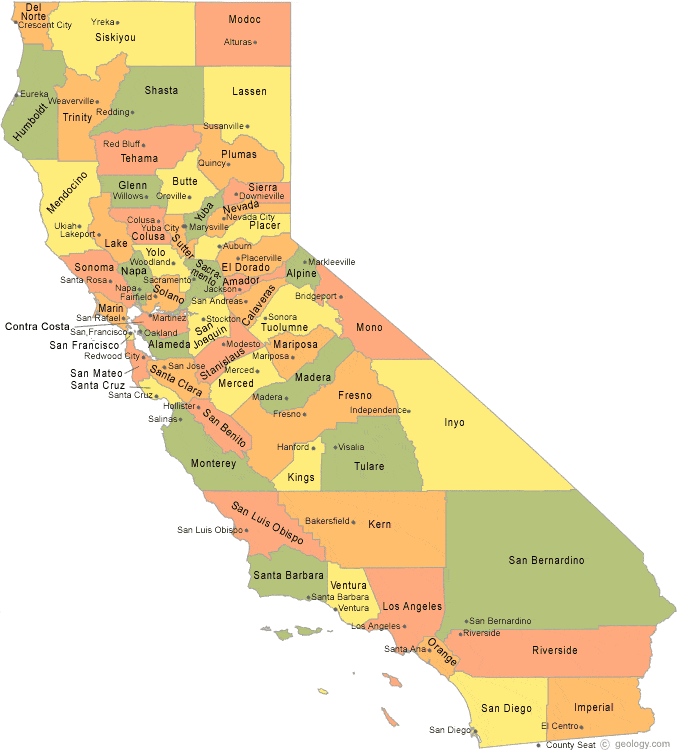
Trying to find out how many counties California actually has? You’re certainly not the only one. From trivia nights to travel planning, the number 58 keeps popping up, and stillthose two digitsonly tells half the story.
California’s counties forma tapestry of extremes: sun-drenched coastal hubs, snow-capped alpine districts, fruit-laden interior valleys, and thriving tech metropolises. None of these counties lacks a unique backstory, moulded by gold-rush dreams, promising new industries, and relentless population booms.
In the sections ahead, we’ll dig into why California ended up with 58 counties, the real responsibilities counties shoulder, and which ones stand out for size, population, or sheer quirkiness. When we’re done, you’ll have the numbers—and be ready to ace any quiz with confidence.
Origins of California’s 58 Counties
On statehood day in 1850, the map contained barely half the jurisdictions we know now. Rapid gold-rush immigration pushed officials to subdivide vast districts. Before the century turned, the count had risen to more than fifty counties, and by 1907 the remaining gaps were closed, locking in the now-famous tally of 5 8.
Assembly journals reveal that most new counties sprang out of three major pressures:
- Hundreds of rugged miles made court access impossible.
- Tax disputes pitting ranchers against merchants sparked break-ups.
- Language and immigrant communities wanted self-rule.
By 1920, the political map stabilised. In modern times, even bold secession schemes rarely get ballot traction, leaving historians to label the era of county making truly closed.
From Kelp Forests to High Deserts: County Geography
Plot a route from the Smith River watershed to border-side Calexico, and you’ll cross dozens of ecosystems. Pacific-facing districts enjoy marine layers and mild winters, while basin counties in the Central Valley record triple-digit heat.
- Mountain counties such as El Dorado, Tuolumne, and Sierra store California’s snowpack.
- Sacramento–San Joaquin fringe counties fight subsidence but export produce worldwide.
- Channel-coast administrators like Santa Barbara manage marine sanctuaries.
That geographic spread underpins how water rights, zoning, and ag yields diverge so sharply. Weather sets tax bases and lifestyles.
What Counties Actually Do
Within the state’s tiered system, municipalities handle zoning, but counties shoulder crucial baseline services that make communities livable. Cradle-to-grave—marriage licenses, tax rolls, voter registries—all reside at the recorder-assessor’s office.
Sheriff’s departments patrol towns too small for police forces, while trial courts hear felony cases. Public-health branches coordinate Medi-Cal. Budget battles occur in monthly Board of Supervisors sessions.
Spotlight: Los Angeles County’s Scale
Contra Costa partners with nearby cities for animal control, highlighting how flexible county structures can be. Uniformity would never work when budgets span five figures to double-digit billions.
In the end, these 58 mini-capitols translate state statutes into daily action. Grasping their portfolio helps residents demand accountability.
Demographic and Fiscal Highlights
Home to over 39 M souls, but the headcount clusters unevenly. LA County by itself packs nearly 25 %. At the other extreme, remote Alpine rarely tops 1 200 inhabitants.
- Top headcount: LA County
- Fewest people: County of Alpine
- Biggest footprint: San Bernardino
- Smallest area: San Francisco
Fiscal bandwidth mirrors population spread. Silicon Valley counties report six-figure median incomes, while interior ag counties face commodity price swings. This revenue gap drive school funding debates every decade.
Knowing which county tops which listmakes relocation plans simpler: county metrics shape property taxes and commute times.
An Epic 58-County Road Trip
Adventure-hungry drivers, bagging all 58 jurisdictions ranks as a top geo-challenge. A popular itinerary sets out in the south-west corner, rolls up the Pacific Coast Highway, jogs east near Monterey, then threads through nut groves and tomato fields, before snaking into the granite spine for old stamp mills.
Breaking the Trip Into Segments
- South-land Loop – Border to wine country; ten jurisdictions in a long weekend of days.
- Crop-Belt Drive – Bakersfield up to the delta; eight hours of orchards.
- Shasta & Siskiyou Turn – crater-rim roads; fire-lookout hikes.
Finish the circuit in Imperial, having logged 1 400–2 000 miles. By then, you can answer any road-trip quiz about county tallies—because you’ve seen them all!
California County FAQ
Wondering how the county system works? Start with these quick answers.
How many counties does California have?
California officially recognises 58 counties—a number that hasn’t changed since 1907. Check any authoritative source, and you’ll find the same figure: 58.
Which county has the largest population in California?
LA County leads by a wide margin, home to over 10 million residents. From Hollywood to high tech, a mix of industries continues to fuel steady inflow.
What is the smallest county in California by population?
Tiny Alpine County sits at the bottom of the population chart, rarely crossing the 1 200-resident mark. Location along rugged mountain corridors naturally restricts settlement, creating tight-knit communities.
What is California’s biggest county geographically?
The land-area giant is San Bernardino County stretching more than here 20 000 square miles. Its sheer scale means climate zones shift from alpine snow to Mojave heat within county lines.
What historical events fixed the number at 58?
The current tally emerged from 19th-century partitioning, with the final adjustments ratified in 1907. Every modern effort to create a new county stalls in committee or dies at the ballot box.
Could a region break away to become its own county today?
Technically, the California Constitution leaves the door open, though the process is arduous. A break-off region must gather local signatures, win a majority vote in each affected county, and secure legislative approval. Consequently, boundaries have frozen for over a century.
Why are counties important to everyday life?
Counties handle the backbone of local governance: property assessments, public hospitals, welfare programs, and jails. Without county infrastructure, everything from jury duty to restaurant inspections would grind to a halt.